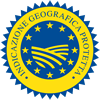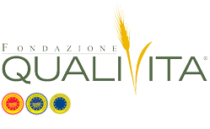Description
The Carne de Cantabria PGI is a meat obtained from bovine of Tudanca, Monchina and Asturiana breeds, Bruna Alpina, Limosina and relative cross breeds. Depending on the age in which they are butchered, four types of meat can be obtained: Ternera, animals with a maximum age of 12 months; Añojo, animals between 12 and 24 months; Novillo, animals between 24 and 40 months; Buey, castrated male, which has spent at least 14 months in the pasture, with a minimum age of 24 months.
Production Area
The Carne de Cantabria PGI is produced throughout all the territory of the Autonomous Community of Cantabria.
Production Method
The use of a free pasture that respects the traditional ways of using natural resources, both in sedentary and transhumant cases, is very important. In the spring and summer period, the bovine are left to graze in the pastures and alpine slopes situated in mountainous areas, whilst in the autumnal period they are brought to pasture in areas near the farm and are kept in the stalls during winter. The cattle are raised and fed on fresh fodder when in the pastures and with silage forage during the winter. During the fattening phase, the rations of the fodder are integrated with concentrated elements approved by the control authority. In other cases, the calves are not weaned before 5-7 months.
Appearance and Flavour
Both the Carne de Cantabria PGI Ternera and the meat from Añojo have a colour which spans from light pink to pink, with a mother-of-pearl colour fat distributed uniformly, and compact muscle. The Carne de Cantabria PGI Novillo and Buey show a colour which goes from light red to red, with a creamy colour fat and a compact muscle speckled with fat.
History
In the production region of the Carne de Cantabria PGI, the activity of grazing is ancient; in fact, a document dated back to the 9th century confirms the concession of the Monastery of Santa María del Yermo to the Oviedo cathedral, of pastures in a large area of Cantabria in order to raise the cattle. The bovine meats from Cantabria have been famous since medieval times when they were sold on various markets and trade fairs.
Gastronomy
The Carne de Cantabria PGI can be stored in the refrigerator for a few days, wrapped in protective film and placed in the coolest compartment. It can be cooked in many ways following the recipes from the area of Cantabria. Perfect roasted or grilled, these methods of cooking bring out the best of its flavour. It is also exquisite for some recipes when cooked in the oven or stewed, in this case accompanied by a large variety of vegetables, many garden products and also mushrooms. The combination of Carne de Cantabria PGI with red wines is harmonious and ideal.
Marketing
The product is sold as Carne de Cantabria PGI Ternera, Añojo, Novillo and Buey, as established by the regulations. It is sold whole or sliced, in well-identified specific portions.
Distinctive Features
The Cantabria region, for its climatic and geographical characteristics is an area particularly suitable for the cultivated pastures and, therefore, for grazing and raising bovine cattle for Carne de Cantabria PGI.






